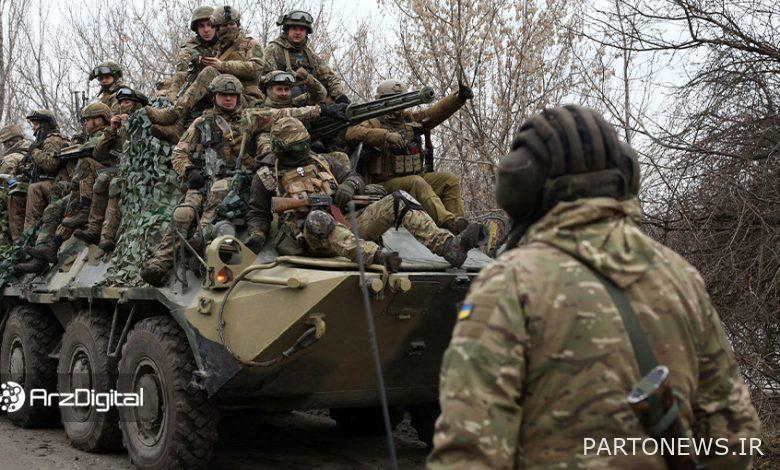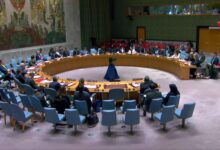How does Ukraine raise funds for the war against Russia with digital currencies? From DAOs to NFTs

Recent reports indicate that significant amounts of digital currency have been donated to Ukrainian governmental and non-governmental organizations during the conflict between Russia and Ukraine. Some of these donations are in the form of Bitcoin, Atrium and Tetra, and of course some of them are related to decentralized organizations (DAOs) and non-recurring tokens (NFTs).
To Report TheVerge, the latest statistics show that governmental and non-governmental organizations supporting the Ukrainian military have received more than $ 12 million in digital currency funding since the start of the war with Russia on February 24. During this period, several decentralized organizations were formed to support Ukraine. A number of unparalleled tokens have been sold to help the country, and last night, Ukraine’s official Twitter page announced that it would accept Bitcoin, Atrium and Tetra to raise funds.
Such donations are usually made using older methods, such as banking transactions. In Ukraine, however, digital currencies have emerged as a quick and easy way to manage donations. In the midst of the war between Russia and Ukraine, it is not just the supply of digital currencies that is happening, and as it turns out, the people of this country are also in great demand for converting their assets into digital currencies; On the day of the conflict, the price of Tetra in one of the country’s exchange offices reached a peak of $ 1,145, which is unprecedented in its kind.
What is the digital currency environment like in Ukraine?
“It is perfectly normal to save dollars physically in Ukraine,” said Illia Polosukhin, co-founder of the Ukrainian currency exchange project NEAR Protocol, one of Atrium’s serious competitors. “People in this country do not trust the national currency, especially the banks.” Polosukhin, whose family is based in Kharkiv, one of the main areas of conflict, says that is why digital currencies are so popular in Ukraine.
Ukraine is best known for its talent in the field of technology. More than 200,000 people in Ukraine have technology-related professions, and the value of the country’s IT business was estimated at $ 6.8 billion last year. In 2021, Ukrainian officials officially legalized bitcoin and digital currencies. The plan includes regulating digital currencies and protecting Ukrainian citizens from fraud. Previously, the legal status of digital currencies in Ukraine was in a state of ambiguity, and although people could operate in this sector, the transactions of Ukrainian exchange offices and institutions did not have a clear legal status.
Ukraine ranks fourth in the Global Digital Acceptance Index, presented by China’s Chainalysis, lower than Vietnam, India and Pakistan, and exchanges about $ 8 billion worth of digital currency annually. .
Alexander Bornyakov, Deputy Minister of Digital Transformation, said:
Our big goal is to become one of the top countries for companies operating in the field of digital currency.
He co-founded the Protocol in Ukraine last year and says he is very surprised by the ubiquity of digital currencies among its citizens, even those who are not working on blockchain projects. He said that Tetra is very popular among the Ukrainian people; Mostly because the people of this country are accustomed to saving dollars as a tool to maintain the value of their capital. Another reason for the popularity of digital currencies in the country is the limited investment options in Ukraine, Polosokhin said. In fact, with the exception of real estate, “the only investment option available to the public is digital currency.”
This partly justifies the support of members of the digital currency community for the Ukrainian people during the war with Russia. Some Western officials are now worried that Russian companies will continue to use digital currencies to circumvent sanctions, while Russian officials themselves have taken steps to ban or restrict digital currencies in the country. Some Russian officials believe this will benefit the digital ruble, Russia’s national digital currency.
Now, as Ukraine’s central bank escalates tensions, suspending electronic money transfers and restricting cash withdrawals from ATMs, digital currencies, along with the dollar, gold and silver, have become a means of transferring funds.
DAOs and NFTs; Contributions that received little attention

As part of the conflict, part of the world’s digital currency community declared its opposition to the war and its support for Ukraine. Vitalik Butrin, creator of the Atrium digital currency, tweeted a few days ago that the war was a “criminal” war against the people of both countries, ending his message with the phrase “pride for Ukraine.” He later republished a tweet from the Unchain Fund. The project is aimed at raising humanitarian aid to Ukraine. The funds deposited in Anchin Fund can be withdrawn in multi-signature form with the approval of 9 people, and one of them is Polosokhin, the co-founder of Nirprotkel.
In addition to Polosukhin, a Russian anti-Putin band has teamed up with Trippy Labs and PleasrDAO to launch a decentralized self-governing body called UkraineDAO, which they say “uses the power of the Web.” “3.0 and use the digital currency community to raise funds.” It should be noted that Vitalik Butrin also introduced the Ukrainian Dao on Twitter as one of the ways to help the people of this country. RELIF (RELI3F) is also one of the projects launched by an artist working in the field of NFTs to support the people of Ukraine. In addition, the FTX digital currency exchange has announced that it will provide $ 25 in financial assistance to all its Ukrainian users.
Yev Muchnik, a Ukrainian lawyer who has lived in the United States since 1988, is working with PieFi on another decentralized organization called the Ukraine United DAO.
He says:
Everyone unites in some way to find a way to help. It gives you hope again for the capabilities of the people, the community and the technology.
One of the goals of this dao is to create an interconnected and peer-to-peer network to keep users connected to the Internet; So that even if centralized Internet service providers fail, users will still have access to the Internet.
Also read: What is a DAO? Familiarity with the best projects of decentralized self-government
“This missing link wants to know what people need,” Mouchnik said. He believes that the Chinese bloc will make it possible for us to ensure that financial aid to Ukraine goes where it is supposed to go. Mochnik understands that people are now having trouble withdrawing money from their bank accounts and are looking for alternative ways to transfer money.
The co-founder of Nir Protocol now focuses on supporting people in need; Whether through digital currency or other methods. He said sending digital currency to one person’s account is easy; But if electricity and the Internet are cut off, people will not necessarily have easy access to their digital currencies. Some reports suggest that only mobile phone operators operate in the Kharkiv region, and according to Polosukhin, it is unclear when access to them will be cut off; But for those who have this problem, using cash is the best option.

